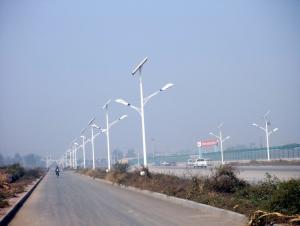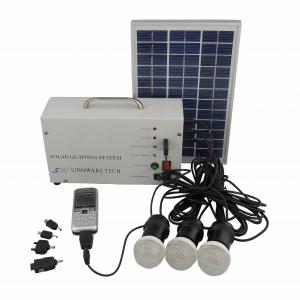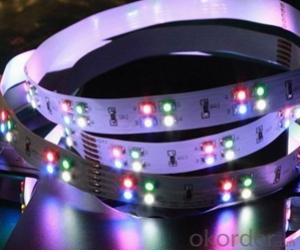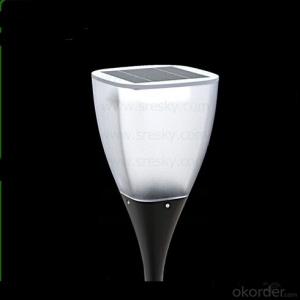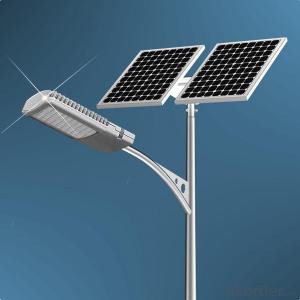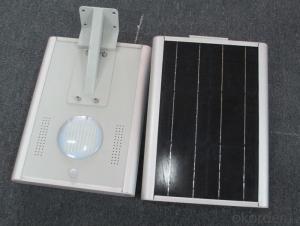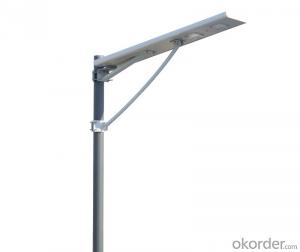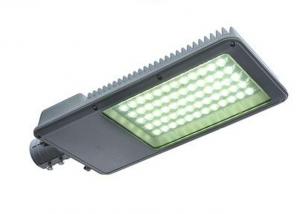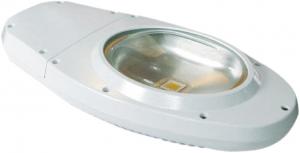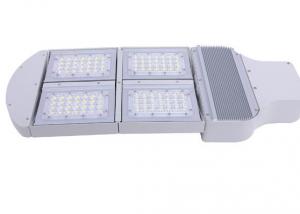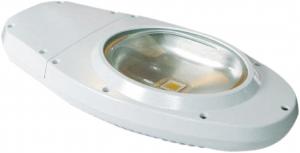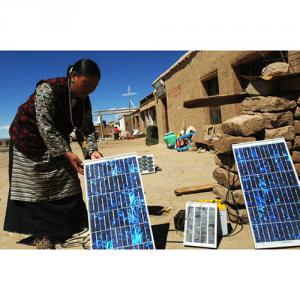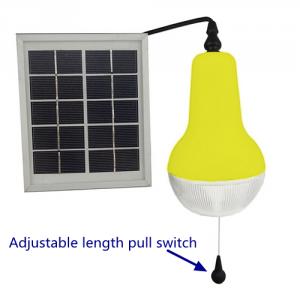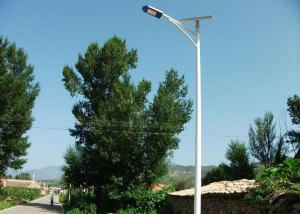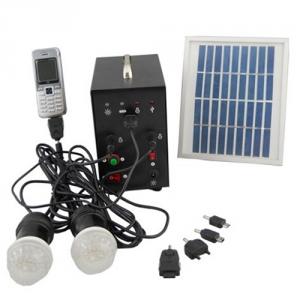solar lamps
- Loading Port:
- China Main Port
- Payment Terms:
- TT OR LC
- Min Order Qty:
- -
- Supply Capability:
- -
OKorder Service Pledge
Quality Product, Order Online Tracking, Timely Delivery
OKorder Financial Service
Credit Rating, Credit Services, Credit Purchasing
You Might Also Like
Specifications
solar for LED light,energy saving,without cables for grid-electricity,easy installtion,free maintence.60W solar street LED light system.
1.solar panels:2pcs 90w
2.battery:2pcs 100AH
3.controller:24V/10A
4.solar panel brackets,battery box,cables,screws.
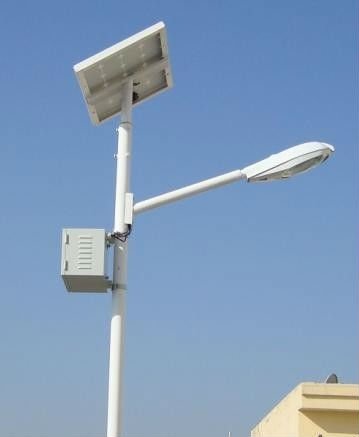
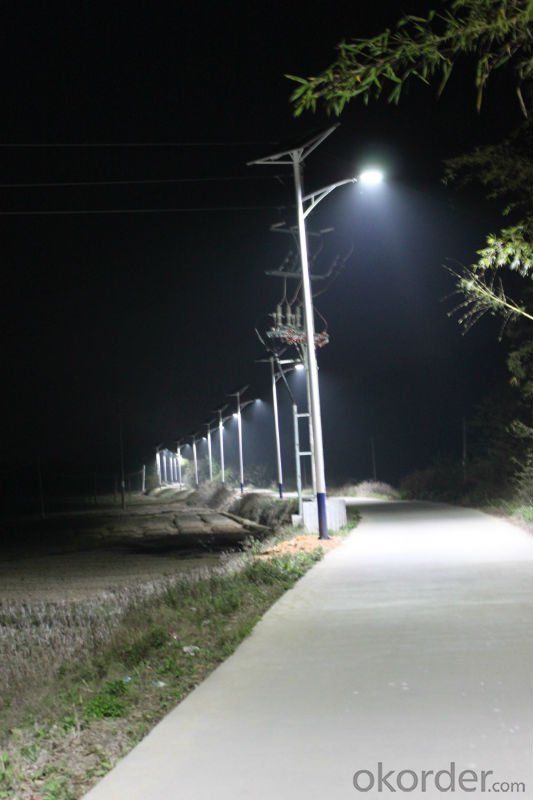
- Q:How long does it take for solar lights to charge fully?
- The time it takes for solar lights to charge fully typically depends on various factors, including the specific model, the strength of sunlight, and the capacity of the batteries. On average, it can take anywhere from 4 to 12 hours of direct sunlight exposure for solar lights to charge completely.
- Q:How do I troubleshoot solar lights that are not working?
- There are a few steps you can take to troubleshoot solar lights that are not working. First, ensure that the solar panel is receiving adequate sunlight by checking for any obstructions or debris. Next, check the connection between the solar panel and the light fixture to ensure it is secure and undamaged. If the lights have a switch, make sure it is turned on. Additionally, check the batteries to see if they need to be replaced. If none of these steps solve the issue, it's possible that the lights may be faulty and may require professional inspection or replacement.
- Q:How do solar lights detect daylight?
- Solar lights detect daylight using a built-in sensor called a photovoltaic cell or a solar panel. This sensor is able to detect the presence of sunlight by measuring the amount of light that hits it. When the sensor detects darkness or a significant decrease in light levels, it triggers the solar light to turn on and start producing light. Conversely, when the sensor detects sufficient daylight, it signals the solar light to turn off and conserve energy.
- Q:Can solar lights be used for illuminating outdoor fountains and water features?
- Outdoor fountains and water features can be illuminated using solar lights. These lights are a convenient choice as they do not require any wiring and are powered by sunlight. During the day, a small solar panel on the lights collects sunlight and converts it into energy to illuminate the lights at night. There are different types of solar lights available, such as floating lights, spotlights, and string lights, allowing you to select the most suitable option to enhance the beauty and atmosphere of your outdoor water features. In addition to being environmentally friendly, solar lights are also cost-effective in the long term since they do not rely on electricity from the grid. However, it is essential to ensure that the solar lights are positioned in an area that receives sufficient sunlight during the day for optimal performance.
- Q:How does the brightness of solar lights compare to traditional lights?
- The brightness of solar lights generally tends to be lower than traditional lights. However, advancements in technology have allowed solar lights to become brighter and more efficient in recent years.
- Q:Are solar lights suitable for use in urban areas?
- Urban areas are well-suited for the use of solar lights. In fact, their popularity is growing due to the numerous benefits they offer. Solar lights operate on sunlight, eliminating the need for electrical wiring or connection to the grid. This makes installation easy and cost-effective. In urban areas with existing lighting infrastructure, solar lights can be used to supplement current lighting or provide illumination in areas where it is lacking. They are ideal for parks, walkways, bike lanes, parking lots, and other public spaces, improving safety and visibility for pedestrians and drivers. Solar lights also have a positive impact on the environment. By harnessing solar energy, they reduce dependence on fossil fuels and contribute to the reduction of greenhouse gas emissions. Additionally, they do not emit light pollution, allowing urban residents to enjoy the night sky and have a restful sleep. Furthermore, solar lights are equipped with sensors that automatically turn them on at dusk and off at dawn. This ensures efficient energy usage and eliminates the need for manual operation. They are also available in various designs and styles, adding aesthetic value to urban landscapes. However, certain factors must be considered when using solar lights in urban areas. Sufficient sunlight availability is crucial for proper charging and nighttime illumination. Shadows from buildings or trees may affect charging capacity, so careful placement is important. In conclusion, solar lights are indeed suitable for urban areas. They provide a sustainable and cost-effective lighting solution, enhance safety and visibility, and contribute to a greener environment. With proper installation and consideration of local conditions, solar lights can be a valuable addition to urban lighting infrastructure.
- Q:Do solar lights require a separate power source for charging?
- No, solar lights do not require a separate power source for charging. They utilize the energy from the sun to charge their internal batteries and provide illumination at night.
- Q:Are solar lights resistant to pests or insects?
- Yes, solar lights are generally resistant to pests or insects as they do not emit any chemicals or attract insects like traditional lights do.
- Q:Do solar lights have replaceable parts?
- Yes, solar lights typically have replaceable parts such as batteries, LED bulbs, and solar panels. These parts can be easily replaced to ensure the longevity and functionality of the solar lights.
- Q:Do solar lights have a built-in timer?
- Yes, many solar lights have a built-in timer that automatically turns them on and off at specific times.
1. Manufacturer Overview |
|
|---|---|
| Location | |
| Year Established | |
| Annual Output Value | |
| Main Markets | |
| Company Certifications | |
2. Manufacturer Certificates |
|
|---|---|
| a) Certification Name | |
| Range | |
| Reference | |
| Validity Period | |
3. Manufacturer Capability |
|
|---|---|
| a)Trade Capacity | |
| Nearest Port | |
| Export Percentage | |
| No.of Employees in Trade Department | |
| Language Spoken: | |
| b)Factory Information | |
| Factory Size: | |
| No. of Production Lines | |
| Contract Manufacturing | |
| Product Price Range | |
Send your message to us
solar lamps
- Loading Port:
- China Main Port
- Payment Terms:
- TT OR LC
- Min Order Qty:
- -
- Supply Capability:
- -
OKorder Service Pledge
Quality Product, Order Online Tracking, Timely Delivery
OKorder Financial Service
Credit Rating, Credit Services, Credit Purchasing
Similar products
New products
Hot products
Related keywords




